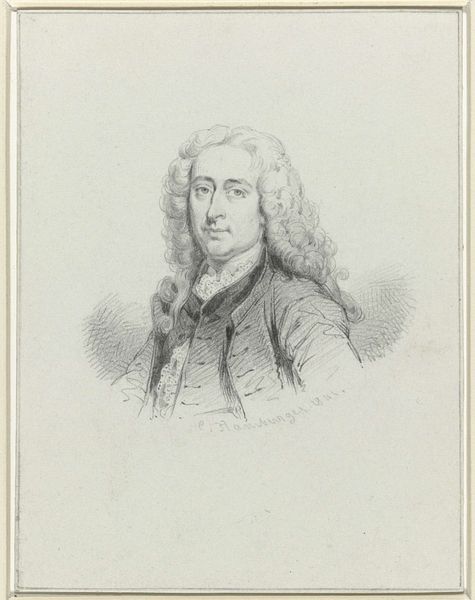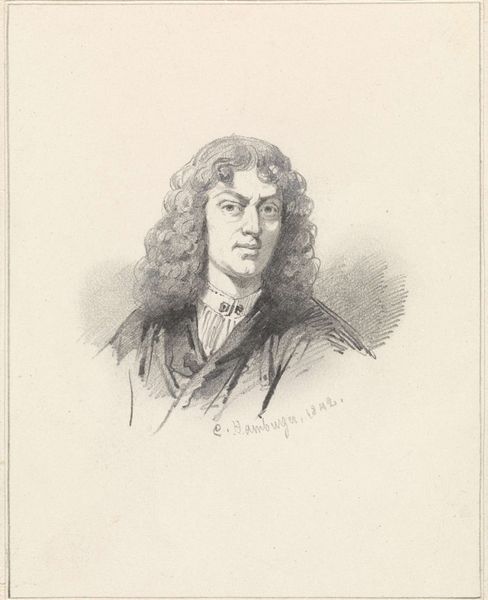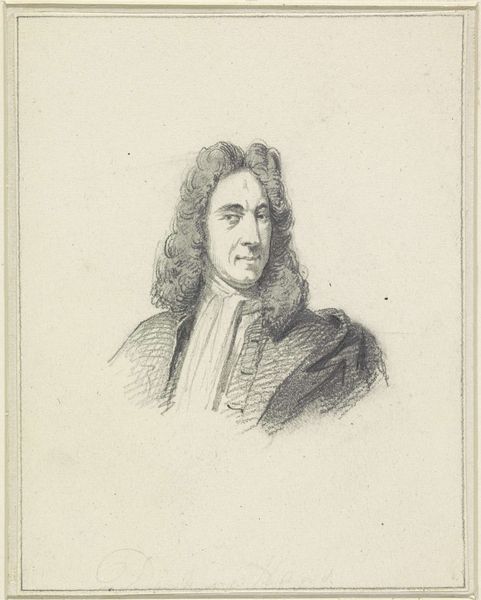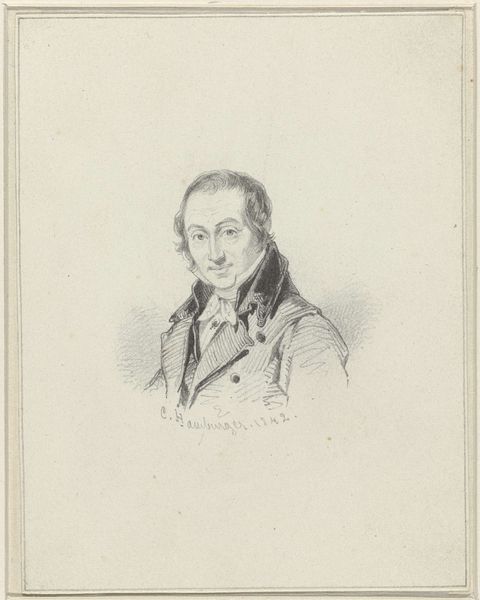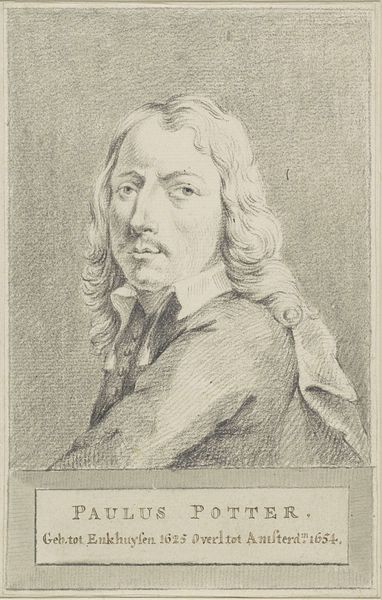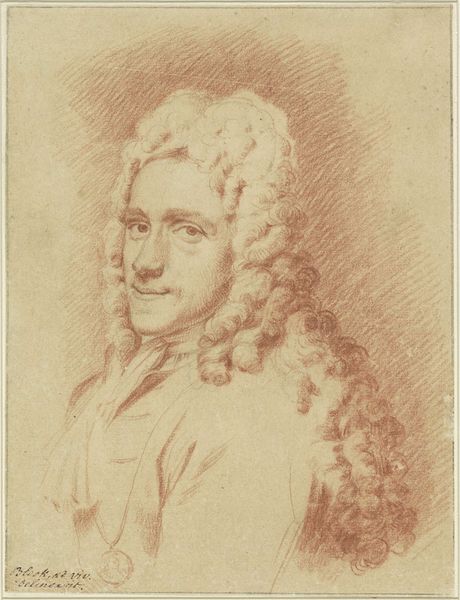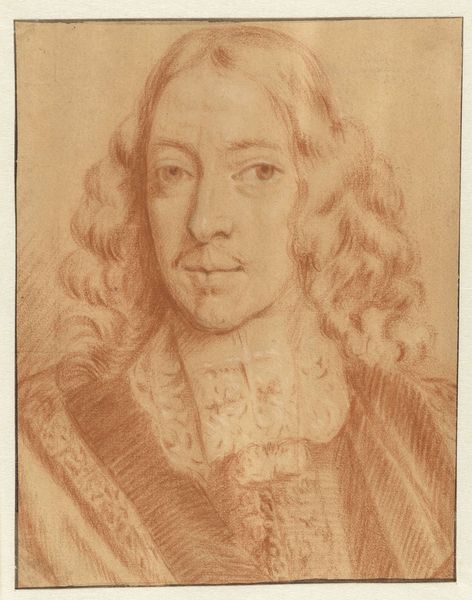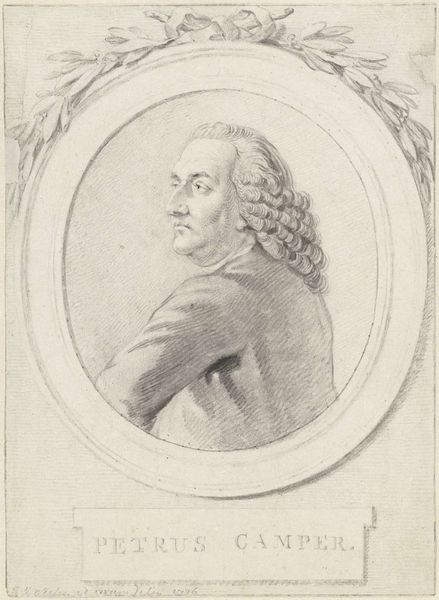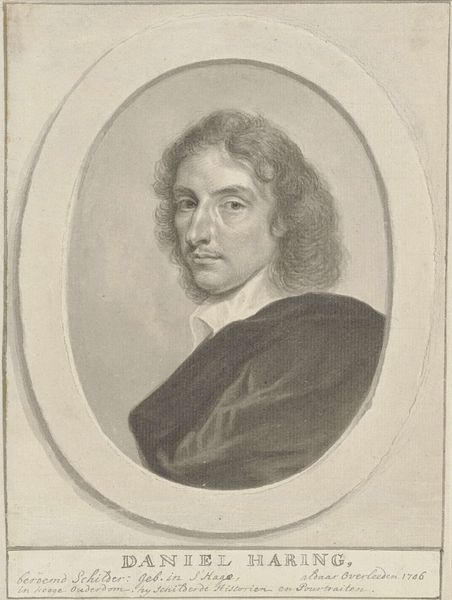
drawing, pencil
#
portrait
#
pencil drawn
#
drawing
#
pencil sketch
#
pencil drawing
#
pencil
#
portrait drawing
#
academic-art
Dimensions: height 244 mm, width 192 mm
Copyright: Rijks Museum: Open Domain
Eugène Van Maldeghem made this portrait of Meindert Hobbema with graphite on paper in the 19th century. Hobbema was a landscape painter from the Dutch Golden Age, but here he is depicted many years later by a Belgian artist working in the Romantic style. It is not unusual for artists to look back to previous eras for inspiration. Van Maldeghem might have been interested in Hobbema as a figure who represented a particular vision of Dutch national identity. During the 19th century, there was a growing interest in establishing national artistic canons, and museums played a key role in this process. This portrait can be considered in relation to the institutionalization of art history as a field of study. To understand this image better, we might research the artistic and political contexts of 19th-century Belgium and the ways that Dutch art was viewed at the time. Art is never created in a vacuum, so considering social and institutional factors is essential to the work of the art historian.
Comments
No comments
Be the first to comment and join the conversation on the ultimate creative platform.
